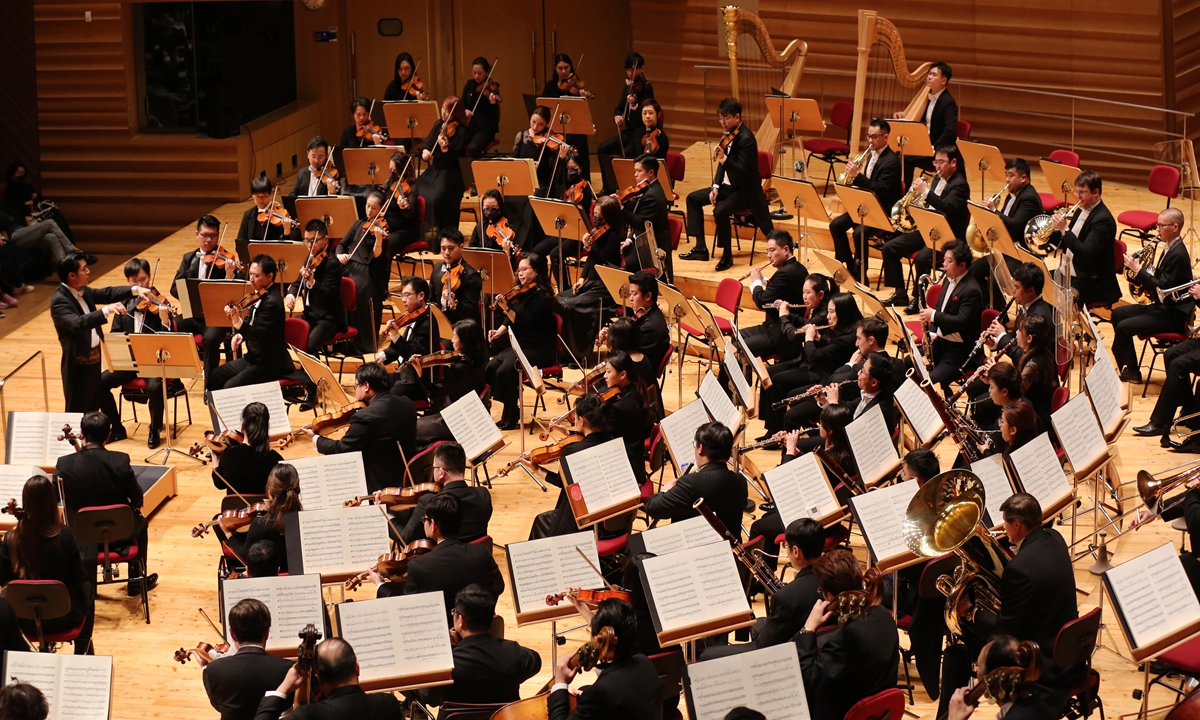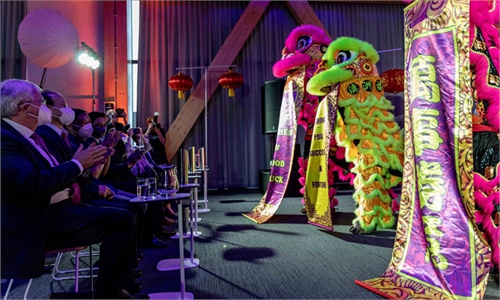ARTS / CULTURE & LEISURE
How cultural exchanges have brought people from China and the US closer
The bonds of friendship

The Shanghai Symphony Orchestra performs at the Jaguar Shanghai Symphony Hall in Shanghai on February 26, 2022. Photo: Courtesy of Shanghai Symphony Orchestra
It is said that culture and art can help develop political relations among nations. It has been indeed earnestly practiced by cultural and art professionals who have been endeavoring to build bridges between China and the US since the ice-breaking visit of US president Richard Nixon to China in 1972.
Although the walls that used to partition China off from the world were gradually removed after the groundbreaking event, it was still difficult for ordinary Chinese to go abroad due to the tremendous economic costs of international travel at the time. Most average Chinese could only get a glimpse of the US through the very few US movies and TV dramas that were introduced into China.
Two-way communication
In 1994, variety show program Fly over the Pacific, produced by the Shanghai Oriental Television and directed by renowned Chinese TV and film director Teng Junjie, became a window for Chinese to see the US with their own eyes.
Following the perspective of a group of well-known Chinese TV hosts who filmed and interviewed people across the US, Chinese audiences got to experience every aspect of US society as if they were in this faraway exotic Western country personally. The cultural exchange program, which Teng directed for three years, became one of the very few channels for Chinese to see the outside world at a time right before the Chinese economy began booming.
Teng, who has also directed numerous major events including the opening and closing ceremonies of the World Expo 2010 in Shanghai, told the Global Times that the foundation of a friendly relationship between China and the US has always existed and that he could really feel the friendliness of Americans through his past work experience.
Years later, when Teng brought his movie Farewell My Concubine: The Beijing Opera, China's first film of a Peking Opera performance presented with 3D/panoramic and Dolby Atmos surround sound technology, to the Dolby Theatre in Los Angeles in 2014, he successfully presented a new image of China while also promoting traditional Chinese culture.
Awarded the Lumière Award, the film was screened in a slew of overseas countries including France, the UK, Japan, Australia and Italy.
"I have been dreaming of establishing a Chinese school of film and television production which would take the lead in the world, overturn the long-term situation of China running after and catching up with others, and instead allow us to gain a foothold in the world of art with a high degree of cultural confidence," Teng told the Global Times.
Remembering history
If Teng has bridged the gap between China and the US through his visual works, prominent Chinese writer Chen Danyan did so by walking along the path that Chinese railroad workers and Chinese miners labored during the gold rush in the US about 150 years ago, when they carried out the backbreaking labor to construct the Transcontinental Railroad, a dangerous task that claimed an estimated 1,200 Chinese lives.
It was all by accident that Chen, who was traveling in Grass Valley, California in 2018, walked into a memorial museum for Chinese railroad workers and saw a wall covered with Chinese people's names.
The elderly US museum curator Wolly explained to her that many Chinese labors who passed away or settled down in the US changed their names into Americanized ones so their original Chinese names were lost. In order to commemorate these Chinese laborers who made great contributions to the construction of US cities and to remember the history of Chinese railroad workers, he collected their Chinese names through various channels.
"We were so touched by the words of this curator, who was not mixed race or had any relatives of Chinese descent. All he wanted to do was to prove that Chinese workers had been in the US, which shows that the friendship and goodwill between Chinese and Americans have always existed," Chen said.
While the COVID-19 pandemic has almost cut off such in-person communication between people from different countries over the past two years, cultural and arts professionals have continued working hard to keep such exchanges alive.
Beyond boundaries
It is said that music is a universal language that goes beyond all boundaries. The online concerts and free musical instrument courses the Shanghai Symphony Orchestra, one of the earliest and best-known orchestras in Asia, has been providing to people around the world amid the pandemic have reduced the distance between Chinese musicians and the global audience.
The pioneering project even caught the attention of The New York Times, which in its article When the Show Must Go On, Even Amid a Coronavirus Outbreak, carried out an in-depth analysis of the project and referred to it as an excellent example of artists and performing groups trying to adapt to a difficult situation.
"The outbreak of the pandemic has brought great challenges to the performance industry, but music can bring love and strength to people," Zhou Ping, president of the Shanghai Symphony Orchestra told the Global Times, noting that the online concerts have significantly expanded its audience, but live music, which has more power to move people's hearts, is something that cannot be replaced.



